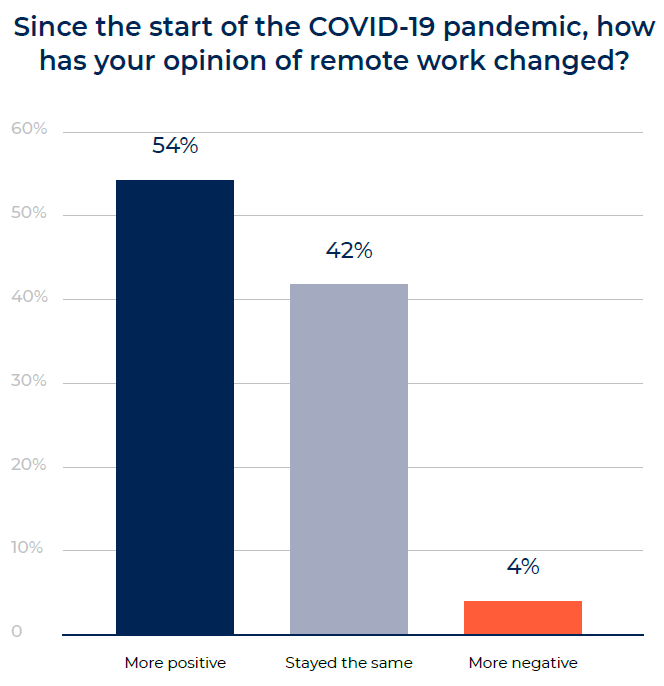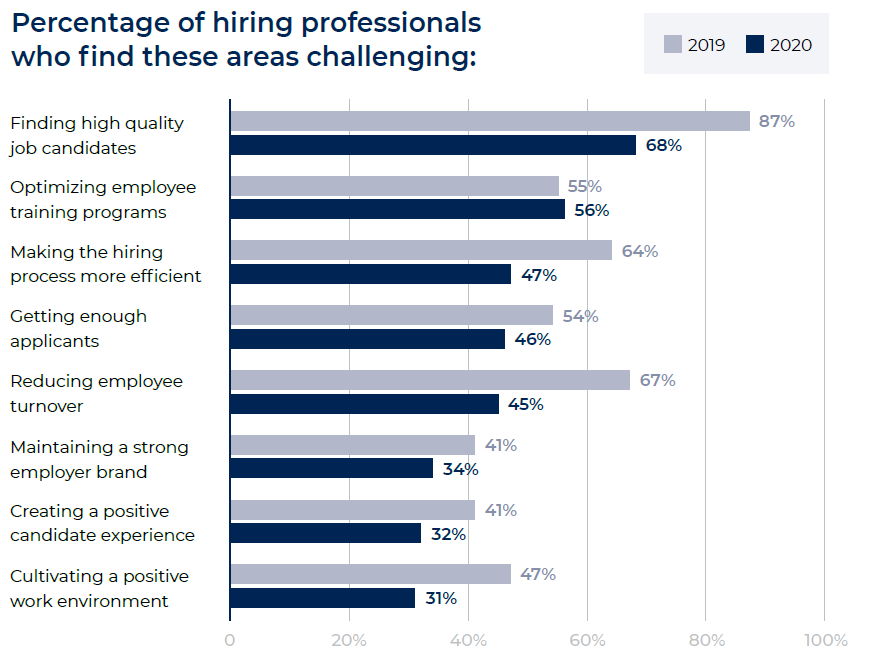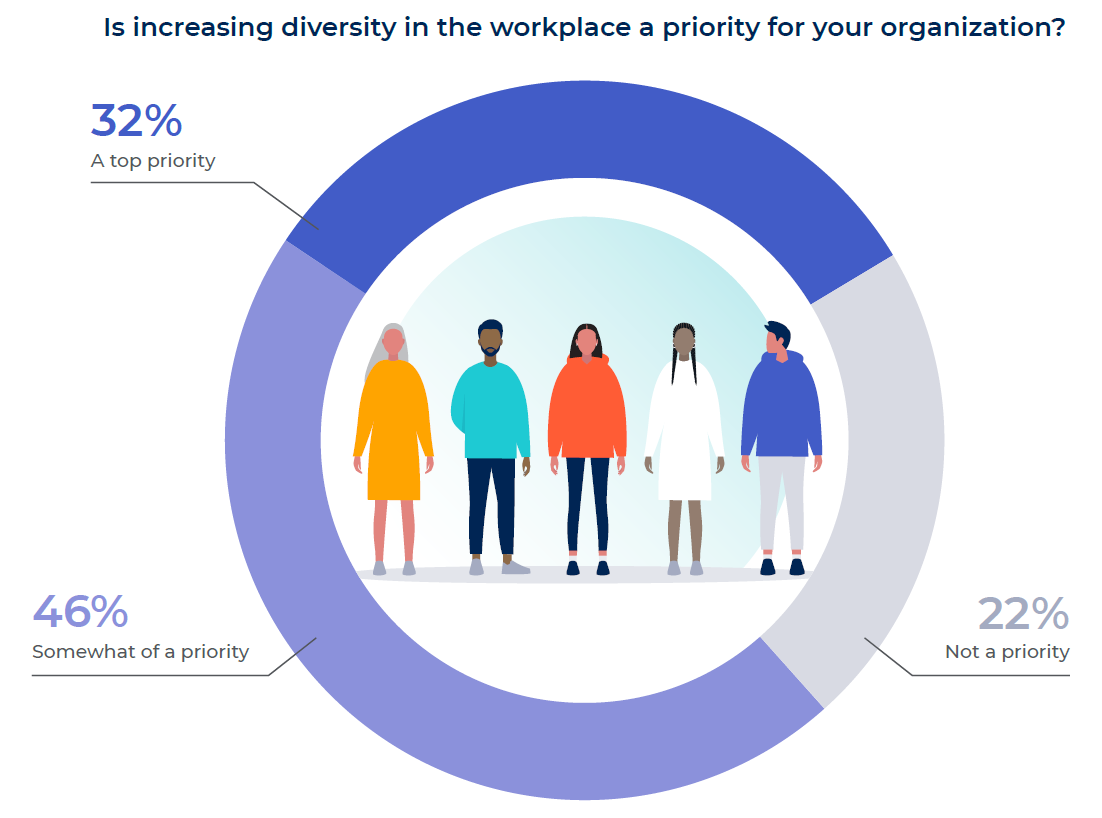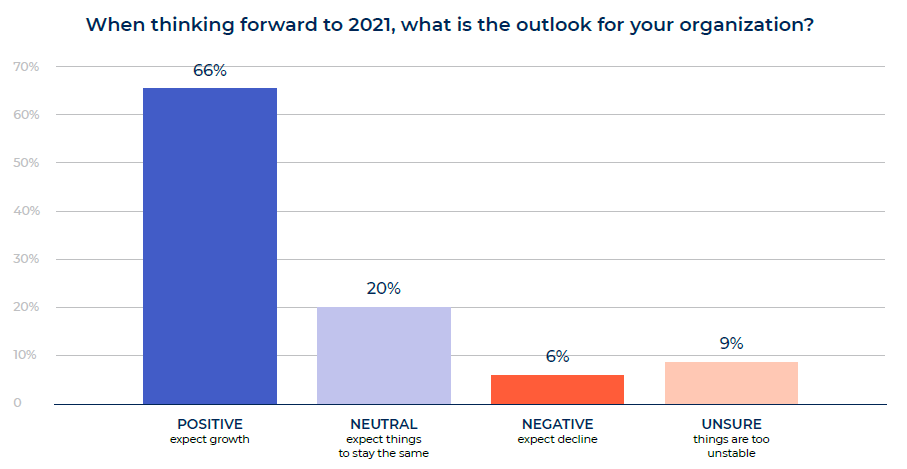Hiring During a Crisis: 4 Key Takeaways to Help Your Team Grow

By Michelle Silverstein, Director of Corporate Marketing at Criteria
Looking back on 2020, the year was challenging in so many ways. Yet challenges present an optimal time to learn from experience and improve for the future.
In the middle of 2020, Criteria, surveyed over 400 hiring professionals to learn about how their hiring processes had adapted to COVID-19. We published the results in our annual Hiring Benchmark Report, and the responses were illuminating. From that data, we uncovered some interesting takeaways about hiring that can be used to improve and grow as we cruise into the new year.
1. Remote Work Is Here To Stay
According to our survey, 69% of organizations transitioned to remote work at some point last year. As a result, organizations had to establish remote hiring processes that were just as effective as in-person processes.
For those who were fortunate enough to be able to work from home, we were curious how they felt about remote work. In our survey, we asked: “Since the start of the COVID-19 pandemic, how has your opinion of remote work changed?”
What we found is that the majority of respondents, 54% said that their opinion of remote work has become more positive. Meanwhile, 42% said their opinion had stayed the same, and a paltry 4% said their opinion had become more negative.
On the whole, remote work has left a remarkably positive impression on those who had the opportunity to try it. From that same survey, respondents said that the key benefits of working from home were:
- Less commuting (95%)
- Flexible schedule (76%)
- Better work-life balance (75%)
- Fewer office distractions (72%)
- More time with family (68%)
- More productivity (64%)
What’s clear is that employees like and appreciate working from home, and that it can actually be more productive than working in an office. This suggests that even after the world returns to a “new normal” and offices begin to open back up, we don’t expect to see everyone go right back into the office. Instead, we expect to see a hybrid workforce model that combines a blend of remote and in-person work.
With remote work likely to play a major role in daily life moving forward, organizations need a way to optimize their remote hiring processes. Remote hiring has the same goal as in-person hiring: to find the best person for the job. Ultimately this means that organizations need a way to accurately and efficiently identify top talent without meeting them face-to-face.
2. The More Candidates, (Not Necessarily) the Better
2020 saw a sudden and massive rise in unemployment early in the year. The result was an influx of candidates flooding the job market. This represented a significant shift in the hiring landscape. Before, the hiring landscape was characterized as a candidate-driven market where qualified candidates were scarce and employers had to put forth greater effort to attract and retain top talent. But with more job seekers looking for opportunities, employers were faced with a welcome challenge: too many candidates.
The result? Hiring professionals started to perceive hiring as “easier” in 2020 than it was in 2019. In our survey, we found the following:
Across nearly every dimension, hiring professionals were having an easier time in 2020 than 2019. This may stem from the feeling of greater choice among a bigger candidate pool.
Nevertheless, the biggest challenge that hiring professionals face continues to be finding high quality job candidates. While more candidates may seem like a blessing, it doesn’t necessarily make it any easier to find that one person who is right for the job. On the contrary, a high volume of candidates can create problems of its own, with the need to efficiently and accurately identifying the candidates who demonstrate the highest potential to succeed.
3. Diversity Is a Priority Now More Than Ever
In our 2020 Hiring Benchmark Report, we also asked hiring professionals if increasing diversity in the workplace was a priority for their organization. What we found was that, for the majority of organizations, it was.
32% said increasing diversity in the workplace was a top priority at their organizations. 46% said it was somewhat of a priority, and just 22% said it’s not a priority. What’s clear is that most organizations are invested in hiring and retaining diverse teams. The question is, how are they going to achieve that goal?
Unconscious bias is pervasive in the hiring process. One way to combat it is by incorporating more data-driven elements that are tied to job success. The goal is to identify the right person for the job based on their abilities, not based on their connections or background.
4. There’s Reason for Optimism About the Future
There’s no denying that 2020 brought with it a lot of reasons to be pessimistic. However, when it comes to the future, hiring professionals are largely optimistic. In our Hiring Benchmark Report, we asked hiring professionals how they felt about the future for their organization, and the results were surprising:
The data painted an extremely optimistic picture. 66% of respondents were positive about the outlook, while 20% were neutral. Just 6% were negative and 9% were unsure. Despite the setbacks of 2020, hiring professionals are seeing the opportunity for growth in the future.
Ultimately this is a lesson in resilience and adaptability. Setbacks don’t have to debilitate any forward-moving progress. Even in times of strain, organizations can keep making plans for the future and building towards those goals, even if the vision has to be altered due to changing circumstances.
How Criteria Can Help
Criteria’s assessment platform is designed to help teams hire and grow. If an organization is the sum of its people, then each new employee has an important role to play. When assessments are incorporated into a long-term hiring strategy, organizations can start to see incremental improvements in everything from performance and productivity to employee retention and engagement.
By administering assessments early in the hiring process, organizations can quickly identify which candidates are most likely to succeed in the role. This can save invaluable time in screening and interviewing candidates, making it easier for the hiring team to maximize their time and efforts towards finding that right person for the role.
Criteria's assessments are designed to help organizations hire diverse, high performing teams. Through a rigorous validation process, Criteria’s team of industrial and organizational psychologists ensures that the tests are non-discriminatory and accurate. And when assessments are administered early in the hiring process, they help to highlight candidates who may have been overlooked based on resume alone.
Interested in learning more about how Criteria can help your project-based business? Visit Deltek’s Marketplace for more information on how Deltek Talent Management integrates with Criteria for easy to administer, scientifically validated, pre-employment tests for your candidates.
About Michelle Silverstein
Michelle Silverstein is the Director of Corporate Marketing at Criteria, a leading provider of pre-employment assessments. With a background in B2B, SaaS and HR Technology, Michelle is a passionate advocate for helping companies make more informed talent decisions through evidence-based hiring practices.

Deltek Project Nation Newsletter
Subscribe to receive the latest news and best practices across a range of relevant topics and industries.






